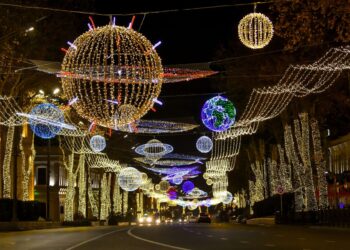Our guesthouse has been running in Etseri, Svaneti for over 10 years now, and it’s interesting to look at how things have changed and grown over this time.
When we bought the house, it had been empty and unfinished for over a decade, and still had no windows (just rotting old wooden frames), no water or electricity. So I drove up first from Tbilisi early in an August with Lali’s nephew as a helper, taking a car full of our belongings. Our jobs were to enlist local talent to get a few windows made and brought from Zugdidi (the nearest place for double-glazed ones at the time), as well as water and electricity put in rudimentarily. The outhouse was built by Lali’s brother and I as the first new building on the 300 sq m property; it still stands today.
Our first guests that summer were actually willing to sleep in their own sleeping bags and mattresses on the 1st floor; they were from Germany and had come to look at humanitarian possibilities in the village.
Gradually, the guest house idea grew, being that the house is so large anyway and we are childless.
Upstairs eventually went from three concrete block walls to 6 bedrooms, 3 bathrooms and a kitchen. We had known that renovation would be multiple times the purchase price of the property ($12,000); this was indeed the case! But it took some years.
We began keeping a book for guests to sign if they wanted, and now this has about 67 languages from all over the world, one of our sources of pride. The main guest countries have changed over the years, though.
Some years before Covid, our three biggest visitor countries were Poland, Ukraine and Israel, in that order (some guest houses in Mesti even had their signs in Hebrew as well as English). During Covid, there was a 14-month stretch with zero guests. Since then, things have been picking up again, although all over Svaneti, numbers are still not quite yet back to before the Virus. Ukraine, of course, has quite other things on its mind as a nation of late, sadly…
A new guidebook on the Caucasus recently came out in German, and this seems to have prompted a surge of Germans, starting not long ago. This year, though, the biggest visitor population is from the Czech Republic, by a big margin, followed by Poland and a few Germans. Interesting how these things change.
Our other demographic tracking moment was in Etseri school, where I taught English for 4 years and Lali for 10. Here, we were interested in how many children were entering grade 1 each September, as a gauge of the population health of the village. Our record was 10 some years ago, but there was a year, earlier, when there were none. Now the influx remains fairly good. Infrastructure has improved with a new cement road through the village from top to bottom, running right past the house. A new two-story sports complex was started on the school grounds last summer, and is still being built now, hopefully to be finished for the coming school year.
It is one of the privileges of living for a decade or more in one village to see the changes over time: not just what happens each season of the year in a farming community, but to see the differences overall. Less plowing-scything of hay by hand, for example; more being done by gasoline-powered machines. Slowly, life seems to be improving; we hope without too much development money going sideways. Now, if we could just get our hope measurement up to a reasonable level, get more of the young men working more and drinking less, we’d really have something.
BLOG by Tony Hanmer
Tony Hanmer has lived in Georgia since 1999, in Svaneti since 2007, and been a weekly writer and photographer for GT since early 2011. He runs the “Svaneti Renaissance” Facebook group, now with over 2000 members, at www.facebook.com/groups/SvanetiRenaissance/
He and his wife also run their own guest house in Etseri: www.facebook.com/hanmer.house.svaneti














